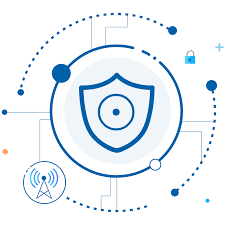Safeguarding the Future: Exploring 5G Security Solutions
Tables of Content
- Introduction
- What are the security methods of 5G?
- How can we overcome 5G security challenges?
- What is the 5G application in security?
- What are the security concerns of 5G?
- Conclusion
Introduction As we embrace the transformative power of 5G technology, ensuring robust security measures becomes paramount. With the rapid expansion of interconnected devices and the proliferation of data, safeguarding networks against potential threats is essential. In this blog, we delve into the realm of 5G security solutions, addressing methods, challenges, applications, and concerns.
What are the security methods of 5G?
- As we embrace the transformative power of 5G technology, ensuring robust security measures becomes paramount. With the rapid expansion of interconnected devices and the proliferation of data, safeguarding networks against potential threats is essential. In this blog, we delve into the realm of 5G security solutions, addressing methods, challenges, applications, and concerns.
Network Slicing: 5G introduces the concept of network slicing, allowing the creation of isolated virtual networks tailored to specific applications or user groups. This segmentation enhances security by isolating traffic and preventing unauthorized access.
Encryption: Enhanced encryption protocols are integral to 5G security Solution, safeguarding data transmitted over the network against interception and unauthorized access. Advanced encryption algorithms ensure the confidentiality and integrity of sensitive information.
Authentication: Strong authentication mechanisms, such as biometric authentication and multi-factor authentication, help verify the identity of users and devices accessing the network, mitigating the risk of unauthorized access.
Secure Access Control: Implementing robust access control measures ensures that only authorized entities can access network resources and services. Role-based access control and dynamic policy enforcement mechanisms enhance security by restricting privileges based on user roles and permissions.
Continuous Monitoring and Threat Detection: Real-time monitoring and threat detection capabilities enable proactive identification and mitigation of security threats. Leveraging AI-driven analytics and machine learning algorithms, organizations can detect anomalies and potential security breaches in the network.
How can we overcome 5G security challenges?
Collaborative Approach: Collaboration between stakeholders, including network operators, device manufacturers, regulators, and cybersecurity experts, is essential to address 5G security challenges collectively.
Standardization: Establishing global standards and frameworks for 5G security ensures consistency and interoperability across networks and devices, facilitating effective security implementation and compliance.
Security by Design: Integrating security considerations into the design and development of 5G networks and devices from the outset enhances resilience and minimizes vulnerabilities.
Continuous Evaluation and Adaptation: Adopting a proactive approach to security involves continuous evaluation of evolving threats and vulnerabilities, coupled with agile adaptation of security measures to mitigate emerging risks.
Education and Awareness: Enhancing cybersecurity awareness among stakeholders, including end-users, employees, and decision-makers, is crucial for promoting a culture of security and fostering proactive risk mitigation strategies.
What is the 5G application in security?
Surveillance and Monitoring: 5G enables real-time video surveillance and monitoring applications, enhancing security and situational awareness in various domains, including public safety, transportation, and critical infrastructure protection.
IoT Security: With the proliferation of IoT devices connected via 5G networks, security solutions such as secure device provisioning, authentication, and data encryption are essential to safeguard IoT ecosystems against cyber threats.
Critical Infrastructure Protection: 5G facilitates secure and resilient communication networks for critical infrastructure sectors such as energy, healthcare, and finance, enabling enhanced security monitoring and response capabilities.
Edge Computing Security: Edge computing platforms powered by 5G technology require robust security measures to protect data and applications at the network edge. Solutions such as secure edge gateways, encryption, and access control enhance security in edge computing environments.
What are the security concerns of 5G?
Cyber Attacks: The increased attack surface resulting from the proliferation of connected devices and high-speed connectivity in 5G networks poses significant cybersecurity risks, including malware infections, DDoS attacks, and data breaches.
Privacy Risks: The massive amount of data generated and transmitted over 5G networks raises concerns about privacy and data protection. Unauthorized access to sensitive information, including personal and corporate data, poses a significant risk to privacy.
Supply Chain Security: Securing the 5G supply chain is essential to prevent supply chain attacks and ensure the integrity and trustworthiness of network infrastructure components, including hardware, software, and firmware.
Regulatory Compliance: Compliance with regulatory requirements and standards, such as GDPR (General Data Protection Regulation) and NIST (National Institute of Standards and Technology) guidelines, is crucial to address legal and regulatory concerns related to 5G security.
Emerging Threats: The dynamic nature of cyber threats, including emerging technologies such as AI-driven attacks, quantum computing-based threats, and sophisticated malware, necessitates continuous innovation and adaptation of security measures to counter evolving threats in 5G networks.
Conclusion
In conclusion, while 5G technology offers unprecedented opportunities for innovation and connectivity, it also presents significant security challenges that must be addressed comprehensively. By implementing robust security methods, overcoming challenges collaboratively, harnessing 5G applications in security, and addressing security concerns proactively, organizations can unlock the full potential of 5G while safeguarding against cyber threats in the digital era.





Comments
Post a Comment